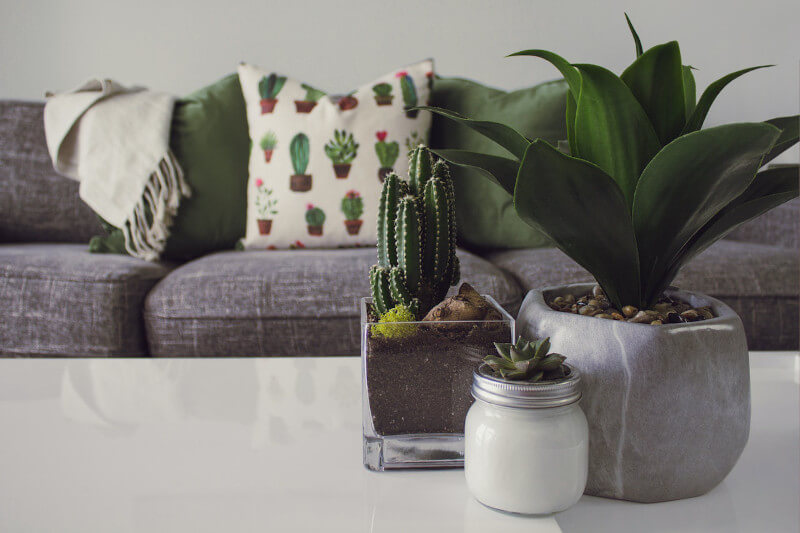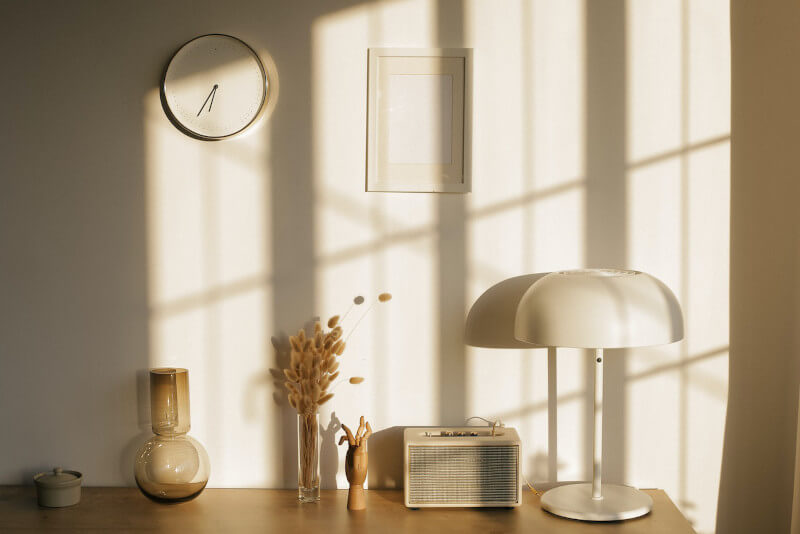Even though a person’s idea of a dream space might differ from another person’s, most dream spaces share two characteristics: they make the dreamer feel happy and they are cozy. When it comes to design, how a room looks is just as important as how it affects you and the feelings it stirs up in you. A room that has been thoughtfully designed can improve those friendly senses of security and comfort that everybody prefers to come home to.
You might believe that to develop the room of your dreams, a major renovation is necessary. However, you’d be shocked at how even a little bit of imagination, innovation, and minor changes can have a serious influence on your environment. Here are eleven tested interior decorating tips that will get you started on the path to generating your very own workable, comfy, interconnected, and elegant dream spot right there in your own home.
Begin by Maintaining a Spotless and Well-organized Environment
It’s incredible how much of a difference a spot that’s been cleaned up and decluttered can make! Because an overcrowded space can be both psychologically and physically confining, the first step in the process of adorning a room should be to clear the clutter from the space. Getting rid of clutter can make more room in one’s mind for recharging, refreshing, resting, and dreaming.
Identify Your Style by Compiling Various Ideas

Discover new ideas by perusing design periodicals, idea books, the websites of established designers, or even Pinterest. When you’ve found a few locations that you adore, examine the photographs very carefully to establish whether or not there is a consistent motif. Do the majority of the pictures feature people wearing clothes with vivid hues? Does it appear that all of the photographs feature furniture that has a modern aesthetic? Do they take place in far-flung locations? Do you notice a lot of elements from the mid-century? Determine what the styles you have captured have in common and focus on that. Using this method, you can start to hone in on what exactly your design aesthetic is.
Determine What You Want the Space to Look Like in the Future
Investigate different fashion concepts to help you hone in on the look that you’re going for. While you are compiling your list of potential concepts, ask yourself these questions: What places or attractions inspire you? What would your ideal living environment look like if there were no restrictions and you were free to include anything you desired? What do you envision it to feel like? Make use of all of these queries as a source of ideas as you construct your ideal vision of your magical space.
Organize Your Color Scheme

According to several studies, the furniture in a room is not the only thing that contributes to the ambiance there; color also plays a significant role. The following is a brief explanation of how the qualities of a few common colors influence one’s mood.
- The color green is symbolic of new beginnings, healing, hope, and growth; it evokes images of nature and lifts one’s mood.
- The blues are known for their calming and tranquilizing effects.
- The color yellow is cheery and inviting, and it makes one feel warm and fuzzy inside.
- The color red invigorates, excites, and boosts one’s self-assurance.
- When you enter a room, the amount of energy you feel is directly related to the colors you choose for the walls.
Make It Authentic to Who You Are
It is essential to incorporate every living space with your unique personality, but your dream space deserves special attention to this detail. This can be accomplished by drawing motivation from your personal history, hobbies, cultural traditions, keepsakes, or even locations that you have visited in the past or wish to visit in the future. Adding dimension and a sense of sincerity to your space can be accomplished by accentuating it with design features that represent those preferences.
A truly inspirational design will include references to either the designer’s past or future. For instance, if you’ve recently returned from a vacation at a stunning oceanfront property, integrating artful seaside décor into the design of your room can assist you in achieving a look that is distinctive to your interests and brings to mind a pleasant time you spent there. This can also help you feel more at home in your space.
You don’t need to be a world traveler or customize the appearance of your dreams at home. If you imagine or read about excursions to far-off lands, you can create the look of those trips right in your own home. You can bring a piece of the world into your own home by decorating it with elements that are inspired by other cultures. Some examples of these elements include vibrant tiles and luxurious textiles.
Make the Most of the Space on Your Walls

You can design a visual exhibit that will make the room feel bigger and add interest to it by taking advantage of the linear living space and putting it to good use. You can accomplish this by erecting bookcases that reach from floor to ceiling, installing open shelves for your hats and shoes, or creating an impressive gallery wall out of framed prints.
Shake It Up, but Make Sure It Stays Together
Because there are so many sources of design inspiration available, it can be challenging to distill your style down to just one style. The great news is that to create your ideal space, you don’t have to restrict yourself to a single design aesthetic. The 80/20 rule is typically utilized by designers to successfully combine a variety of design styles. The 80/20 rule in interior design states that 80% of the space should be decorated in the same aesthetic, while the remaining 20% should be decorated in a style of your choosing.
For instance, a well-balanced room might feature eighty percent aspects of classical design and twenty percent elements of contemporary style. Determine which design style will predominate in a given space before attempting to mix styles like a pro. This step is necessary before you can mix designs skillfully.
Once you’ve decided on the space’s primary design aesthetic, whether it’s conventional, contemporary, mid-century, or something else, you should strive to maintain that aesthetic throughout the vast bulk of the room while occasionally incorporating a few components from distinctive styles. An excellent illustration of this would be the refurbishing of a living room in a classic fashion, with the addition of modern printed decorative pillows and brightly colored drapery, which produces an intriguing mix of the two styles.
It can be a lot of fun to combine different design styles, but there is a fine line to walk between successfully pulling off a handpicked and gathered look and ending up with an interior that seems disorganized and crowded. You won’t run into any problems as long as you keep the 80/20 rule in mind while you’re buying your home’s furnishings and finishing touches.
Be Sure There is Adequate Lighting

Think about the height of the space, how much natural light comes in through the windows, and how much artificial light you need in the room. In most rooms, there should be at least three different sources of light:
- Lightings that illuminate the entire room, such as recessed can lighting or a skylight.
- Lighting that is specific to a task, such as a reading light fixture.
- Table lamps, picture lights, and wall sconces are examples of accent lighting that can be used.
Don’t Overlook the Importance of the Ceiling
A room’s ceiling is often regarded as the “forgotten wall” or the “fifth wall” in the space. You can entice people to look up in a room and offer a mesmerizing view when you do so by decorating the ceiling with geometric print or a new coat of paint in an intriguing color.
Give the Area Some Room to Breathe
When you’re shopping for things you love, it’s easy to get swept away, but you should be careful not to overstock on furniture. Make sure that the arrangement of your furniture in the room does not make it too crowded by drawing up a floor plan that specifies where everything will go. If your belongings do not take up every available inch of space, you will be able to take more pleasure in your home and have a deeper appreciation for the things you own.
Integrate Functional Pieces
When we think about what our ideal living space would be like, we frequently give more consideration to the aesthetic aspects of the design. However, what uses is it to have a beautiful space if it cannot also fulfill its intended purpose? A dream space ought to be useful and serve you in several ways, such as by supplying you with solace, motivation, and a livable environment, among other things. You can accomplish this by surrounding yourself with things that calm and comfort you, such as candlelight, textured blankets, luxurious pillows, and intriguing books, among other things.
In addition, when you are planning the space, you should take into consideration not only your immediate but also your long-term storage requirements. This will allow you to incorporate an adequate number of storage options. For instance, if you are a voracious reader, you should designate a space in your home specifically for reading that can accommodate not only the books you are currently reading but also the ones you will eventually buy. In conclusion, you should take into account your interests and bring in components that cater to those interests. For instance, if you enjoy throwing dinner parties, you should be sure to have a sizable dining table in your home.